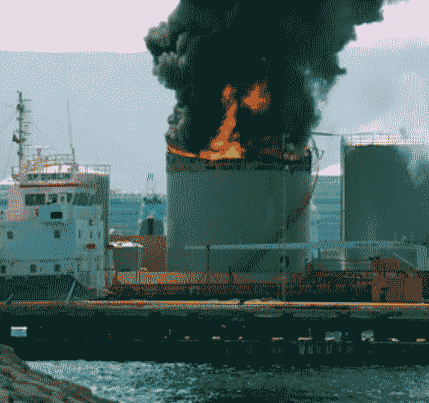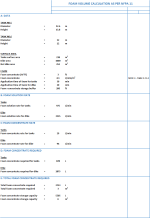Foam Calculation NFPA 11

Description
NFPA committee activity in this field dates from 1921, when the Committee on Manufacturing Risks and Special Hazards prepared standards on foam as a section of the general Standard on Protection of Fire Hazards, Incident to the Use of Volatiles in Manufacturing Processes. The 2005 edition reorganizes the requirements for low, medium, and highexpansion foam to better incorporate the requirements of NFPA 11A.
Please note that this calculation contains Excel VBA macros.
Calculation Reference
Fire
Foam
NFPA 11
<p>High-expansion foam is a fire-suppression agent used in scenarios where large areas need to be covered, such as warehouses, aircraft hangars, or ship compartments. The foam expands rapidly, filling the area and suppressing the fire by cutting off the oxygen supply, cooling the area, and preventing the release of flammable vapors.</p>NFPA 11A is a standard published by the National Fire Protection Association (NFPA) that provides guidelines for the design, installation, operation, testing, and maintenance of high-expansion foam systems. To better incorporate the requirements of NFPA 11A into a high-expansion foam system, consider the following key aspects:
-
Foam concentrate: Ensure the foam concentrate used in the system complies with the standard's requirements, including performance, quality, and compatibility with other system components.
-
Foam proportioning: The foam proportioning system should be designed and installed to deliver the correct foam solution to the foam generators, as specified by the foam concentrate manufacturer and NFPA 11A requirements.
-
Foam generators: The foam generators should be compatible with the foam concentrate and designed to produce the desired expansion ratios, typically between 200:1 and 1000:1. Proper generator placement and spacing should be followed according to the standard.
-
Water supply: Ensure an adequate water supply is available to support the foam system's operation. Calculate the required flow rates and pressure for the specific system design.
-
Piping and distribution: Design the piping and distribution system to efficiently transport the foam solution from the proportioning system to the foam generators.
-
Control and alarm systems: Install a control and alarm system to monitor and control the foam system's operation, and provide notification in case of activation, malfunction, or other issues.
-
Ventilation: Consider the effects of ventilation in the protected area, as excessive ventilation can reduce the foam's effectiveness. NFPA 11A provides guidance on ventilation control.
-
System inspection, testing, and maintenance: Regularly inspect, test, and maintain the high-expansion foam system to ensure proper operation in case of an emergency. Follow the guidelines provided by NFPA 11A and the equipment manufacturer.
-
Training: Ensure that personnel responsible for operating and maintaining the high-expansion foam system receive proper training on the system's use, inspection, testing, and maintenance procedures.
By incorporating these key aspects of NFPA 11A into the design and operation of a high-expansion foam system, you can help ensure the system's effectiveness and safety in suppressing fires in large spaces.
Calculation Preview
Full download access to any calculation is available to users with a paid or awarded subscription (XLC Pro).
Subscriptions are free to contributors to the site, alternatively they can be purchased.
Click here for information on subscriptions.


